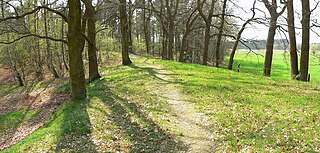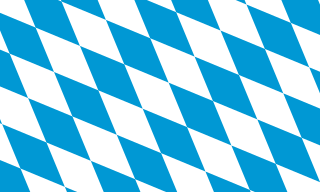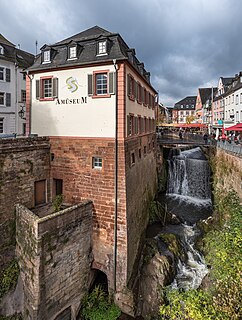 W
WSt. Andrew's is a 10th-century Romanesque church located in the old town of Cologne, Germany. It is one of twelve churches built in Cologne in that period. Archbishop Gero consecrated the church in 974, dedicating it to St. Andrew, although an earlier church at the site was dedicated to St. Matthew. In the 12th century, the church was rebuilt in the Romanesque style, and was probably completed after the great fire of Cologne in 1220. In the crypt of the church lies a Roman sarcophagus from the 3rd century, which holds the remains of the 13th-century theologian and natural philosopher St. Albertus Magnus. Since 1947, the Dominican Order has ministered to the church.
 W
WThe Prince-Bishopric of Brandenburg was an ecclesiastical principality of the Holy Roman Empire from the 12th century until it was secularized during the second half of the 16th century. It should not be confused with the larger Diocese of Brandenburg established by King Otto I of Germany in 948, in the territory of the Marca Geronis east of the Elbe river. The diocese, over which the prince-bishop exercised only spiritual authority, was a suffragan diocese of the Archdiocese of Magdeburg, its seat was Brandenburg an der Havel.
 W
WThe circular rampart of Burg is a defensive work from the Early Middle Ages period located near the German town of Celle in Lower Saxony. The site, dating roughly to the 10th century and located in an inaccessible area of marsh by the River Fuhse, probably acted as a refuge for the local population. Today this 3-metre-high (9.8 ft) circular embankment belongs to one of the most important Early Middle Age historical monuments in Celle.
 W
WBurtscheid Abbey was a house of the Benedictine Order, after 1220 a Cistercian nunnery, located at Burtscheid, near Aachen, North Rhine-Westphalia, in Germany.
 W
WThe Duchy of Bavaria was a frontier region in the southeastern part of the Merovingian kingdom from the sixth through the eighth century. It was settled by Bavarian tribes and ruled by dukes (duces) under Frankish overlordship. A new duchy was created from this area during the decline of the Carolingian Empire in the late ninth century. It became one of the stem duchies of the East Frankish realm which evolved as the Kingdom of Germany and the Holy Roman Empire.
 W
WFischbeck Abbey is a convent for canonesses in Fischbeck near Hessisch Oldendorf, Lower Saxony, Germany.
 W
WGandersheim Abbey is a former house of secular canonesses (Frauenstift) in the present town of Bad Gandersheim in Lower Saxony, Germany. It was founded in 852 by Duke Liudolf of Saxony, progenitor of the Liudolfing or Ottonian dynasty, whose rich endowments ensured its stability and prosperity.
 W
WGladbach Abbey was a Benedictine abbey founded in 974 by Archbishop Gero of Cologne and the monk Sandrad from Trier. It was named after the Gladbach, a narrow brook that now runs underground. The abbey and its adjoining villages grew into the town of Gladbach, incorporated in the 1360s, the origin of the present city of Mönchengladbach in North Rhine-Westphalia.
 W
WGröningen Priory was a Benedictine monastery, located west of Gröningen in present-day Saxony-Anhalt, Germany. The abbey church is part of the Romanesque Road scenic route.
 W
WHersbruck is a small town in Middle Franconia, Bavaria, Germany, belonging to the district Nürnberger Land. It is best known for the late-gothic artwork of the Hersbruck altar, the "Hirtenmuseum" and the landscape of Hersbruck Switzerland.
 W
WMemleben Abbey was a Benedictine monastery in Memleben on the Unstrut river, today part of the Kaiserpfalz municipality in Saxony-Anhalt, Germany. The convent, now ruined, was established by Emperor Otto II and his consort Theophanu about 979.
 W
WPetershausen Abbey was a Benedictine imperial abbey at Petershausen, now a district of Konstanz in Baden-Württemberg, Germany.
 W
WThe Regensburger Domspatzen is the cathedral choir at the Regensburg Cathedral in Regensburg, Bavaria, Germany. The boys' choir dates back to 975, and consists of boys and young men only. They perform in liturgy and concert, and have made international tours and recordings.
 W
WThe Diocese of Dresden–Meissen is a Diocese of Catholic Church in Germany with its seat in Dresden. It is suffragan to the Archdiocese of Berlin.
 W
WSaarburg is a city of the Trier-Saarburg district in the Rhineland-Palatinate state of Germany, on the banks of the Saar River in the hilly country a few kilometers upstream from the Saar's junction with the Moselle. Now known as a tourist attraction, the Leuk River flows into the town center and makes a spectacular drop of some 60 feet before joining the larger Saar River that bisects the town. The waterfall is the result of a 13th-century project to redirect the Leuk through the city center.
 W
WStade, officially the Hanseatic City of Stade is a city in Lower Saxony in northern Germany. First mentioned in records in 934, it is the seat of the district which bears its name. It is located roughly 45 km (28 mi) to the west of Hamburg and belongs to that city's wider metropolitan region. Within the area of the city are the urban districts of Bützfleth, Hagen, Haddorf and Wiepenkathen, each of which have a council of their own with some autonomous decision-making rights.
 W
WThe Duchy of Swabia was one of the five stem duchies of the medieval German kingdom. It arose in the 10th century in the southwestern area that had been settled by Alemanni tribes in Late Antiquity.